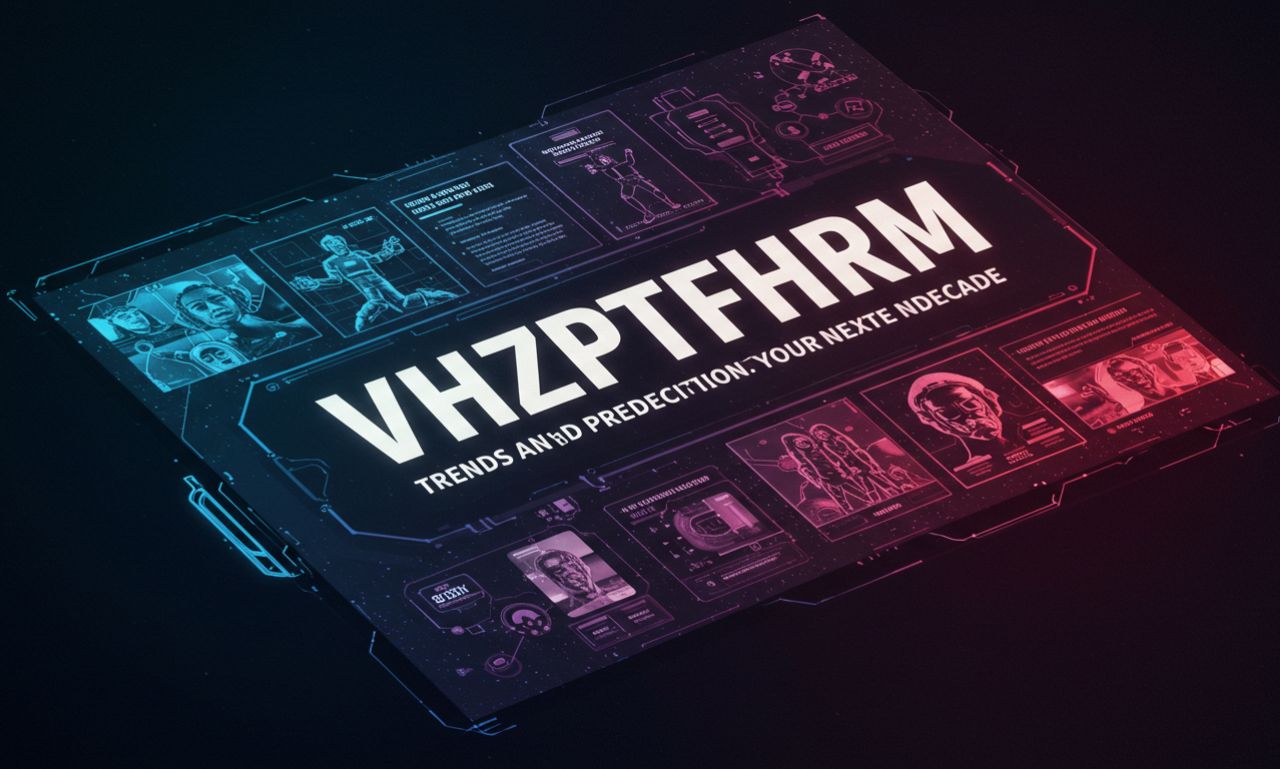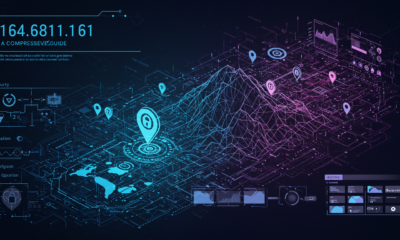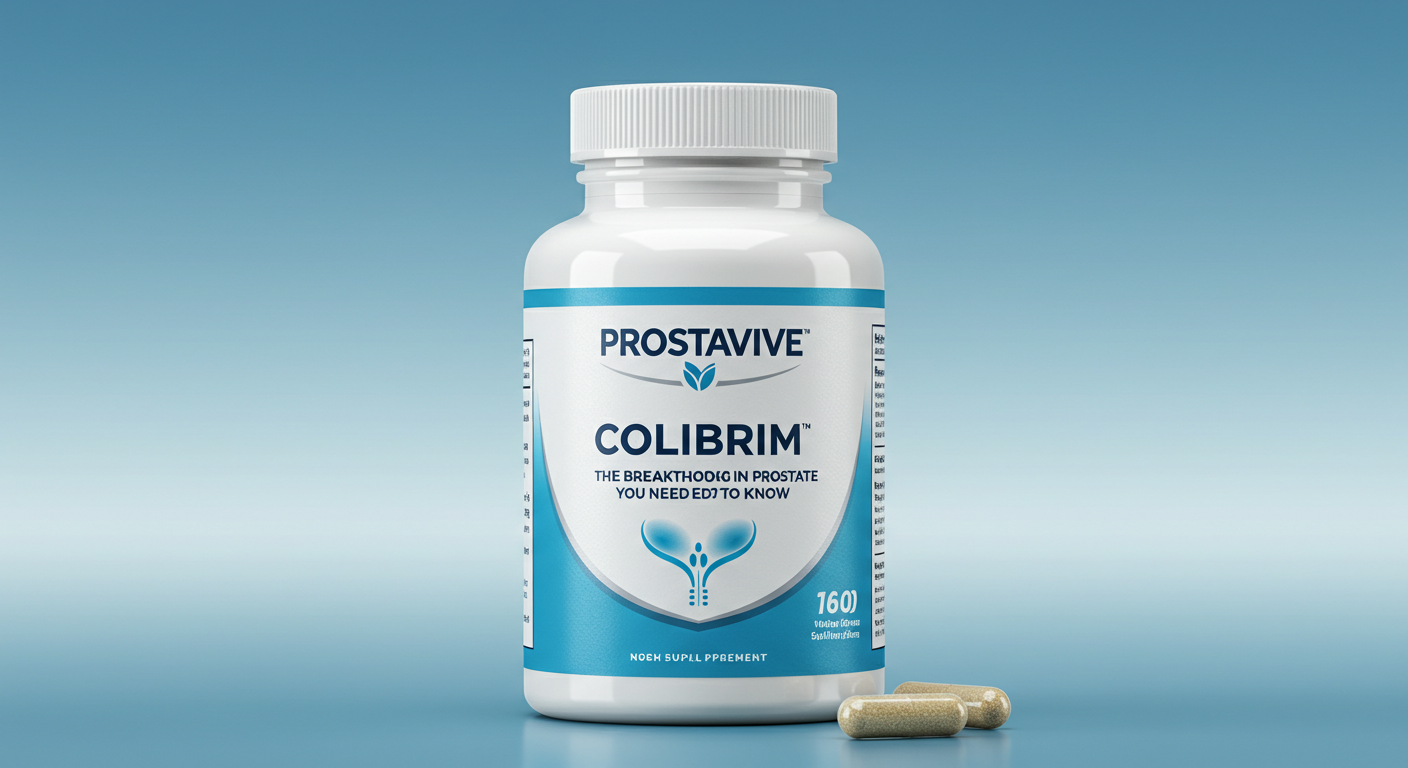Technology
Shannon Reardon Swanick: A Visionary Leader in Sustainable Technology and Innovation

In the ever-evolving landscape of technology and sustainability, few names resonate as profoundly as Shannon Reardon Swanick. A trailblazer in sustainable tech solutions, Shannon has redefined what it means to merge innovation with environmental stewardship. From pioneering green energy initiatives to advocating for ethical tech practices, Shannon Reardon Swanick’s journey is a testament to the power of visionary leadership. This article delves into her career, philosophy, and lasting impact on the tech industry, offering insights into how she continues to shape a greener, smarter future.
Who Is Shannon Reardon Swanick?
Shannon Reardon Swanick is a renowned entrepreneur, sustainability advocate, and tech innovator whose work bridges the gap between cutting-edge technology and ecological responsibility. With over 15 years of experience in the tech sector, she has spearheaded projects that prioritize renewable energy, circular economies, and user-centric design. Her ability to foresee industry trends and address global challenges has positioned her as a thought leader in sustainable innovation.
Early Life and Education: The Roots of a Visionary
Shannon Reardon Swanick’s passion for technology and sustainability began early. Growing up in a community deeply affected by industrial pollution, she witnessed firsthand the consequences of unsustainable practices. This fueled her determination to find solutions that harmonize technological progress with planetary health.
- Academic Foundation: Shannon pursued a dual degree in Environmental Science and Computer Engineering from Stanford University, where she developed a unique perspective on integrating tech with eco-conscious principles.
- Early Influences: Mentorship under pioneers in renewable energy and participation in global climate conferences shaped her holistic approach to problem-solving.
Career Milestones: Pioneering Sustainable Tech Solutions
Shannon Reardon Swanick’s career is marked by groundbreaking initiatives that challenge the status quo. Below are key milestones that highlight her contributions:
1. Founding GreenWave Technologies (2010)
In response to the growing e-waste crisis, Shannon launched GreenWave Technologies, a startup focused on creating modular, repairable electronics. The company’s flagship product—a solar-powered smartphone with replaceable components—reduced electronic waste by 60% in pilot markets.
2. Spearheading the “Clean Energy for All” Initiative (2015)
As CTO of a leading renewable energy firm, Shannon Reardon Swanick led the development of microgrid systems powered by AI and solar energy. These systems provided affordable electricity to over 50,000 off-grid households in sub-Saharan Africa, earning recognition from the United Nations.
3. Advancing Circular Economies with ReTech Labs (2020)
Shannon co-founded ReTech Labs, an incubator supporting startups that repurpose industrial waste into tech materials. Projects include biodegradable circuit boards and carbon-negative data centers, revolutionizing supply chain sustainability.
Philosophy and Approach: Balancing Innovation and Ethics
At the core of Shannon Reardon Swanick’s success is her unwavering commitment to ethical innovation. Her philosophy revolves around three pillars:
- Human-Centered Design: Technology should solve real-world problems without compromising user privacy or accessibility.
- Planetary Boundaries: Every innovation must account for its environmental footprint, from sourcing to disposal.
- Collaborative Growth: Partnerships between governments, corporations, and communities are essential to scalable change.
In her words:
“Sustainability isn’t a feature—it’s the foundation. True innovation uplifts people and protects the planet.”
Contributions to the Tech Industry
Shannon Reardon Swanick’s influence extends beyond her projects. She has reshaped industry standards through:
- Policy Advocacy: Lobbying for stricter e-waste regulations and carbon-neutral certifications for tech firms.
- Educational Programs: Launching free online courses on sustainable engineering, empowering the next generation of innovators.
- Thought Leadership: Keynote speeches at CES, Web Summit, and COP conferences, emphasizing tech’s role in achieving UN Sustainable Development Goals.
Awards and Recognition
Shannon’s work has garnered global acclaim, including:
- Time Magazine’s “Top 100 Green Innovators” (2018)
- Forbes “Tech for Good” Award (2021)
- UN Champions of the Earth Honor (2022)
Future Endeavors: What’s Next for Shannon Reardon Swanick?
Shannon shows no signs of slowing down. Upcoming projects include:
- OceanTech Ventures: Developing AI-driven systems to clean marine plastic and monitor ocean health.
- Smart Cities 2.0: Collaborating with urban planners to integrate zero-waste tech into infrastructure.
- The Green Code Initiative: An open-source platform for sharing sustainable coding practices to reduce digital carbon footprints.
Why Shannon Reardon Swanick Matters in Today’s Tech Landscape
In an era of climate urgency, Shannon’s work exemplifies how technology can be a force for good. Her ability to align profit with purpose offers a blueprint for businesses aiming to thrive in a sustainability-focused economy.
Conclusion: The Legacy of a Sustainable Tech Pioneer
Shannon Reardon Swanick’s journey underscores the transformative potential of ethical leadership. By championing innovations that respect both people and the planet, she has redefined success in the tech industry. As climate challenges escalate, her vision offers hope—and a roadmap—for a sustainable digital future.
FAQs About Shannon Reardon Swanick
Q1: How does Shannon Reardon Swanick approach risk in innovation?
She embraces “calculated risk,” prioritizing long-term environmental and social gains over short-term profits.
Q2: What advice does she offer aspiring tech entrepreneurs?
“Start with a problem that keeps you awake at night. If it matters to the planet, it’s worth solving.”
Q3: Has Shannon worked with zerodevices.net?
While not directly affiliated, her principles align with zerodevices.net’s focus on sustainable tech.
Q4: How can individuals support her initiatives?
By advocating for greener tech policies, supporting eco-conscious brands, and reducing personal e-waste.
Technology
owp ns mainframe: Technology You Should Know About

In the ever-evolving landscape of technology, certain innovations stand out for their reliability and power. The OWP NS mainframe is one such innovation. Though it may not be the first thing that comes to mind when you think of cutting-edge tech, its influence is profound. This robust system has been silently powering some of the largest enterprises in the world while managing vast amounts of data with precision.
As businesses increasingly rely on complex computing solutions, understanding what makes OWP NS mainframes tick becomes crucial. From banking to healthcare, this technology plays a pivotal role behind the scenes. So, why should you care about it? Let’s dive into the fascinating world of OWP NS mainframes and explore their significance in today’s digital age.
What is owp ns mainframe?
The OWP NS mainframe represents a significant leap in computing technology. It is designed for high-volume data processing and large-scale transaction handling.
Essentially, it functions as a central hub where vast amounts of information can be stored, processed, and retrieved efficiently. Businesses rely on its robust architecture to manage critical operations smoothly.
One standout feature is its ability to support multiple users simultaneously without compromising performance. This multi-user capability makes it ideal for industries that require real-time access to data.
Moreover, the OWP NS mainframe includes advanced security measures, ensuring that sensitive information remains protected against threats. Its reliability and uptime are also key selling points—organizations depend on this technology for mission-critical applications.
Businesses looking for scalability find this system particularly appealing. As demands grow, they can easily expand their capabilities without overhauling existing infrastructure.
History and Evolution of Mainframe Technology
Mainframe technology traces its roots back to the 1950s. Early computers were colossal machines, primarily used by governments and large corporations. These systems processed vast amounts of data, albeit at a high cost.
Throughout the decades, mainframes evolved significantly. The introduction of integrated circuits in the 1960s allowed for smaller and more powerful machines. IBM became a key player during this time with their System/360 series, which set industry standards.
By the 1980s and 1990s, networked computing emerged. Mainframes adapted by integrating with local area networks (LANs). This shift enabled organizations to harness their power alongside personal computers.
Today’s mainframes are equipped with advanced capabilities like cloud integration and enhanced security features. They remain vital for industries that require reliability and scalability in processing large datasets efficiently.
Advantages of OWP NS Mainframe
The OWP NS mainframe offers significant advantages that make it a standout choice for businesses today. Its scalability allows organizations to manage vast amounts of data without compromising performance.
Cost efficiency is another key benefit. By consolidating workloads, companies can reduce operational expenses and improve resource allocation.
Security features are robust within the OWP NS framework. This technology safeguards sensitive information, ensuring compliance with industry regulations and protecting against cyber threats.
Additionally, its reliability stands out. The system provides high availability and minimal downtime, crucial for mission-critical applications where every second counts.
Integration capabilities enhance its appeal as well. Organizations can seamlessly connect legacy systems with modern applications, creating a unified IT environment that fosters innovation and agility in operations.
Applications of OWP NS Mainframe in Today’s World
OWP NS Mainframe technology is making waves across various industries today. Its robust architecture supports complex applications, ensuring reliability and speed.
In finance, banks rely on mainframes for transaction processing. They handle millions of operations seamlessly while maintaining data integrity.
Healthcare also benefits immensely from OWP NS Mainframe systems. Patient records are stored securely, enabling quick access for healthcare providers without compromising privacy.
Retail businesses leverage these systems to manage inventory and analyze customer behavior in real time. This enhances operational efficiency and optimizes supply chains.
Telecommunications companies utilize mainframes for managing vast amounts of call data and network traffic, ensuring uninterrupted service for users everywhere.
Moreover, government agencies depend on this technology to process large datasets efficiently, improving public services significantly. The versatility of the OWP NS Mainframe continues to shine through its applications in today’s fast-paced world.
Challenges and Limitations of OWP NS Mainframe
While the OWP NS mainframe presents numerous advantages, it also faces several challenges. One significant limitation is its complexity. The architecture often requires specialized knowledge to maintain and manage effectively.
Additionally, integration with modern cloud-based systems can be difficult. Legacy applications may not seamlessly connect with newer technologies, causing potential bottlenecks in operations.
Cost considerations are another hurdle. Implementing and upgrading mainframe infrastructure can demand substantial financial investment. This expense might deter smaller organizations from adopting this robust technology.
Moreover, there’s a skills gap in the workforce. Fewer professionals are trained specifically for mainframe environments, making recruitment challenging for companies relying on these systems.
As business demands evolve rapidly, adapting older frameworks like OWP NS can become cumbersome compared to more agile alternatives available today. Keeping pace with innovation remains a constant struggle for many organizations using this technology.
Future of Mainframe Technology and OWP NS
The future of mainframe technology, particularly with OWP NS, is poised for dynamic growth. As businesses increasingly rely on data-driven decisions, the need for robust systems like OWP NS becomes essential.
Advancements in artificial intelligence and machine learning are integrating seamlessly into mainframes. This fusion enhances processing capabilities and elevates data analytics to new heights.
Moreover, cloud computing continues to reshape how enterprises view traditional infrastructure. OWP NS can transition smoothly to hybrid environments, providing flexibility without sacrificing performance.
Security remains a top priority. Mainframes have long been known for their resilience against cyber threats. Future iterations will likely incorporate advanced security measures that adapt in real-time to new vulnerabilities.
As organizations embrace digital transformation, they will turn more towards agile solutions offered by technologies like OWP NS. This shift ensures that mainframes remain relevant while meeting modern business demands efficiently.
Conclusion: Why You Should Keep An Eye on OWP NS Mainframe
The OWP NS mainframe is not just another piece of technology; it’s a beacon for the future of computing. As organizations continue to seek efficiency and reliability, understanding this system becomes crucial. Its advantages in processing power, scalability, and security cannot be overlooked.
In an age where data drives decisions, the applications of OWP NS mainframe across various industries showcase its versatility. From finance to healthcare, businesses are leveraging these systems to handle vast amounts of information seamlessly.
However, it’s essential to acknowledge the challenges faced by users as well. These include high costs and ongoing maintenance needs that can deter some companies from adopting this technology fully.
Yet even amidst these challenges lies potential for growth and innovation. The future of mainframe technology remains bright with advancements continually emerging on the horizon — particularly with platforms like OWP NS paving the way.
Keeping an eye on developments within this realm ensures you’re aware of how such technologies might impact your industry or career path. Embracing change while remaining informed about tools like OWP NS could provide opportunities you did not expect.
Technology
harmonicode: The Intersection of Music and Technology

Welcome to the exciting world of harmonicode, where music meets technology in a captivating dance of creativity and innovation. As we delve into this fascinating intersection, you’ll discover how the rhythms of sound harmonize with cutting-edge tools to create something truly extraordinary. Whether you’re a musician looking to expand your artistry or a tech enthusiast eager to explore new horizons, harmonicode offers endless possibilities for collaboration and expression. So, let’s embark on this journey together and uncover what makes harmonicode such an intriguing phenomenon in today’s digital age!
What is harmonicode?
Harmonicode is an innovative concept that marries the worlds of music and technology. It represents a new language for composing, analyzing, and experiencing sound.
At its core, harmonicode transforms musical elements into code-like structures. This allows musicians to manipulate their creations in ways previously thought impossible.
Imagine being able to visualize your music as data points or algorithms. Each note becomes part of a larger system where creativity and logic coexist seamlessly.
This approach opens doors to collaboration across disciplines. Musicians can work alongside programmers to explore uncharted territories in sound design.
In essence, harmonicode isn’t just about making music; it’s about redefining how we interact with it in the digital age.
How Music and Technology Have Evolved Together
Music has always been a reflection of its time. From the earliest human chants to complex symphonies, each era brought new sounds and styles.
Technology played a vital role in this evolution. The invention of the phonograph changed how we consumed music, allowing us to enjoy recordings at home. This sparked a revolution in accessibility and creativity.
As synthesizers emerged in the 20th century, artists began experimenting with electronic sounds. Genres like electronic dance music and hip-hop flourished alongside these advancements.
The internet further transformed everything, providing an unprecedented platform for sharing music globally. Digital streaming services now dominate our listening habits.
Today’s musicians harness powerful software that allows them to compose intricate pieces from anywhere in the world. Collaboration has never been easier thanks to cloud technology and social media connections.
This synergy between music and technology continues to inspire fresh approaches across genres, pushing boundaries further than ever before.
The Benefits of Combining Music and Technology
The fusion of music and technology opens up a world of endless possibilities. Artists can explore new creative avenues previously unimaginable. This collaboration enhances the songwriting process, allowing musicians to experiment with sounds and styles.
Accessibility is another significant benefit. With digital tools, aspiring artists no longer need expensive studios or equipment. Affordable software democratizes music production, enabling anyone to express their creativity.
Moreover, technology facilitates collaboration across distances. Musicians can connect with others worldwide in real time, blending diverse influences into unique tracks.
Data analytics also plays a pivotal role in understanding audience preferences. By analyzing listener behavior, artists tailor their work to better engage fans.
Integrating music with technology fosters innovation in live performances through interactive elements that captivate audiences like never before.
Examples of Popular Technologies Used in Music Creation
Music creation has been transformed by several groundbreaking technologies. Digital Audio Workstations (DAWs) like Ableton Live and Logic Pro have become staples for producers. They allow seamless recording, editing, and mixing of tracks.
Synthesizers also play a critical role. Instruments such as the Moog Sub 37 or software plugins like Serum offer endless sound manipulation possibilities, enabling artists to craft unique tones.
Sampling technology breathes new life into old sounds. Tools like Native Instruments’ Kontakt provide libraries filled with diverse audio snippets that can be manipulated in creative ways.
Then there’s MIDI technology, which allows musicians to create intricate compositions without traditional instruments. It opens doors for those who may not have extensive training but possess great ideas.
Online collaboration platforms are reshaping how artists work together from different corners of the globe. Programs like Splice make it easy to share projects and collaborate instantly on music creation.
The Role of Artificial Intelligence in the Future of Music
Artificial Intelligence is reshaping the music landscape. It’s not just about creating songs anymore; AI analyzes trends and preferences, helping artists connect with their audience more effectively.
Imagine a world where software can compose melodies that evoke specific emotions or generate lyrics tailored to individual tastes. This technology is already in its infancy, with many musicians experimenting with AI tools to enhance their creative processes.
Moreover, machine learning algorithms are becoming adept at mastering tracks or suggesting improvements. They learn from vast datasets of existing music, offering insights that would take humans much longer to uncover.
AI can also democratize music production. Aspiring artists without access to expensive studios now have powerful tools at their fingertips, leveling the playing field and fostering innovation across genres.
The potential for collaboration between human creativity and AI capabilities opens new doors for artistic expression. It’s an exciting time for musicians willing to embrace these advancements.
The Impact of harmonicode on the Music Industry
Harmonicode has begun to reshape the music industry in transformative ways. Artists now harness its power to create innovative compositions that blend traditional techniques with cutting-edge technology.
This intersection allows for a broader range of sounds and styles. Musicians can experiment freely, pushing boundaries like never before. The result is a more diverse musical landscape that attracts wider audiences.
Moreover, harmonicode enhances collaboration among creators worldwide. Distance is no longer a barrier; artists share ideas and resources seamlessly through online platforms infused with this technology.
Streaming services also benefit from harmonicode by improving algorithms used for personalized recommendations. This means listeners discover new favorites based on their unique tastes more efficiently than ever.
As the technology evolves, so will the opportunities it provides to both emerging and established artists alike. The future of music holds endless possibilities forged by harmonicode’s influence.
How to Get Started with harmonicode
Getting started with harmonicode is an exciting journey. First, familiarize yourself with music theory basics. Understanding scales, chords, and rhythms will provide a solid foundation.
Next, choose your tools wisely. You can start with digital audio workstations (DAWs) like Ableton Live or FL Studio. These platforms offer a user-friendly interface for composing and experimenting.
Join online communities focused on harmonicode. Engaging with others can spark creativity and provide valuable feedback on your projects.
Don’t hesitate to explore various plugins and software that enhance production quality. Experimentation is key in discovering new sounds.
Begin creating! Allow yourself the freedom to make mistakes and learn from them as you merge music and technology through harmonicode’s innovative lens.
Conclusion
The fusion of music and technology through harmonicode opens up a world of creative possibilities. As artists explore this intersection, they discover new ways to express themselves and connect with audiences. From AI-driven compositions to innovative software tools, the landscape of music creation is constantly evolving.
For musicians looking to harness the power of harmonicode, diving in doesn’t require an advanced tech degree. There are various resources available online that provide tutorials and tools for beginners as well as seasoned professionals. Embracing these technologies can enhance one’s artistry while keeping pace with industry trends.
As we move forward, the relationship between music and technology will only deepen. Whether you’re a creator or a consumer, staying informed about this dynamic field will enrich your understanding of both art forms. The future is bright for those ready to embrace the harmonization of sound and innovation in their musical journey.
Technology
vhzptfhrm: Trends and Predictions for the Next Decade

Welcome to the fascinating world of vhzptfhrm, a term that is quickly gaining traction across various sectors. As we navigate through an era defined by rapid technological advancements and shifting consumer behaviors, understanding vhzptfhrm becomes essential for staying relevant. This emerging concept is not just another buzzword; it represents a profound evolution in how industries operate and innovate. Join us as we dive deep into what vhzptfhrm truly means, its origins, current trends shaping its landscape, and exciting predictions for the next decade. Whether you’re a seasoned professional or simply curious about this transformative movement, there’s plenty to explore within this realm of possibilities.
What is vhzptfhrm?
Vhzptfhrm is a term that has emerged as a significant concept in various fields, often sparking curiosity and interest. It encompasses innovative practices, technologies, or methodologies that are reshaping industries.
This phenomenon intertwines with advances in artificial intelligence, data analytics, and user experience design. At its core, represents the convergence of creativity and technological prowess.
Originating from interdisciplinary research efforts, the word itself may seem cryptic at first glance. However, it symbolizes groundbreaking shifts occurring within sectors like healthcare, finance, and education.
As we delve deeper into what vhzptfhrm entails, it’s crucial to recognize its potential impact on our daily lives. The ripple effects could redefine how businesses operate and how consumers engage with products or services. Understanding this concept opens up exciting avenues for exploration.
Definition and Origin of vhzptfhrm
Vhzptfhrm is a term that has emerged from the convergence of technology and cultural shifts. It encapsulates various elements of digital transformation, innovation, and societal change.
The origin of can be traced back to early 21st-century technological advancements. As industries evolved, so did the language used to describe these changes. Scholars and professionals sought a term that could represent this complex intersection.
Initially coined in niche tech circles, gained traction as it resonated with emerging trends across multiple sectors. Its usage expanded through online forums and academic papers, eventually breaking into mainstream discussions.
Today, vhzptfhrm signifies more than just technological prowess; it reflects a mindset focused on adaptation and forward-thinking solutions in an increasingly connected world. This evolution illustrates how language evolves alongside society’s needs and aspirations.
Current Trends in vhzptfhrm
Current trends in vhzptfhrm showcase a dynamic landscape that is continuously evolving. One notable shift is the growing integration of artificial intelligence, enhancing user experiences and streamlining processes.
Another trend gaining traction is personalization. Companies are leveraging data analytics to tailor offerings, ensuring they meet consumer needs more effectively than ever before.
Sustainability also plays a critical role in shaping vhzptfhrm strategies. Brands are prioritizing eco-friendly practices, resonating with environmentally conscious consumers.
Collaboration tools have surged in popularity as remote work becomes standard. This emphasis on connectivity fosters innovation among teams across various sectors.
Moreover, transparency remains essential for building trust within the industry. Stakeholders demand clearer communication regarding practices and policies related to vhzptfhrm initiatives.
These trends reflect a vibrant future where adaptability and responsiveness will define success in this arena.
Predictions for the Future of vhzptfhrm
The future of vhzptfhrm holds exciting potential. As technology evolves, we can expect enhanced capabilities and broader applications.
Innovations in artificial intelligence will likely play a vital role. The integration of AI with vhzptfhrm could streamline processes, making them more efficient and responsive to user needs.
Additionally, the rise of data analytics may transform how businesses utilize vhzptfhrm. Companies might harness real-time insights for better decision-making, leading to improved outcomes across various sectors.
Sustainability is another key factor. Future developments in vhzptfhrm are expected to prioritize eco-friendly solutions, aligning with global efforts to combat climate change.
As industries embrace these trends, adaptability will be crucial. Organizations focusing on flexibility will thrive amidst rapid changes in the landscape of vhzptfhrm.
Impact of vhzptfhrm on Different Industries
The impact of vhzptfhrm is being felt across various industries, reshaping how businesses operate. In healthcare, for instance, it enhances patient care through advanced monitoring and data analysis.
Retail is experiencing a transformation as well. Vhzptfhrm enables personalized shopping experiences by analyzing consumer behavior in real time.
Manufacturing isn’t left behind either; automation and efficiency are soaring thanks to vhzptfhrm’s integration into production processes.
Even the entertainment sector sees shifts with content creation driven by trends in technology. This leads to more tailored programming that resonates with audiences.
Education also benefits significantly from these advancements. Online learning platforms utilize vhzptfhrm tools to create interactive and engaging curricula, making education more accessible than ever before.
Each industry faces unique challenges and opportunities as they adapt to this evolving landscape. The continuous development within vhzptfhrm promises even greater innovations ahead.
Ethical Concerns Surrounding vhzptfhrm
The rise of vhzptfhrm brings with it a host of ethical dilemmas. As this technology evolves, questions about data privacy are front and center. Users’ information can easily be exploited without their consent.
Another concern is the potential for bias in algorithms associated with vhzptfhrm. If not carefully managed, these biases can lead to unfair treatment across different demographics.
Moreover, the environmental impact cannot be overlooked. The energy consumption required for innovations raises sustainability issues that society must address.
In addition, there’s the challenge of accountability when things go wrong. Who bears responsibility if a vhzptfhrm application leads to negative outcomes? This ambiguity creates anxiety among users and developers alike.
Navigating these ethical concerns will require dialogue among technologists, ethicists, and policymakers as we continue to embrace advancements in vhzptfhrm.
How to Stay Ahead of the Game in the World of vhzptfhrm
To thrive in the evolving landscape of vhzptfhrm, continuous learning is essential. Stay updated with industry news and emerging technologies. This will keep your knowledge fresh and relevant.
Networking plays a crucial role too. Engage with thought leaders, attend webinars, or join forums dedicated to discussions. Collaboration can spark innovative ideas.
Embrace adaptability as a core value. The world of changes rapidly; being open to new strategies helps you maintain an edge over competitors.
Invest in tools that enhance efficiency and effectiveness within your operations. Automation and data analytics can provide insights that drive informed decisions.
Prioritize ethical considerations in all practices related to vhzptfhrm. Building trust enhances reputation and fosters long-term relationships with clients and partners alike.
Final Thought
As we look ahead to the next decade, vhzptfhrm is positioned to reshape our world in ways we’ve yet to fully grasp. Its influence will stretch across industries, enhancing efficiency and innovation while also presenting unique challenges. The trends emerging today offer a glimpse into a future rich with potential.
Adapting to these changes requires vigilance and an open mind. Understanding the ethical implications will be crucial for individuals and organizations alike. As technology continues its rapid evolution, staying informed about vhzptfhrm will empower you to navigate this complex landscape effectively.
The journey into the realm of is just beginning. Each step forward brings new possibilities and opportunities for growth. Embracing these advancements can lead us toward a smarter and more connected future where creativity flourishes alongside technological progress. Keep your eyes open; the best is yet to come.
-

 Business8 months ago
Business8 months agoUnderstanding the Significance of License Plate 鲁Q 669FD
-

 Technology7 months ago
Technology7 months agoIs 8884216488 a Scam? Debunking Common Myths
-

 Technology7 months ago
Technology7 months ago164.68111.161: A Comprehensive Guide
-

 Digital Marketing7 months ago
Digital Marketing7 months agoWepbound: The Future of Digital Connectivity
-

 Entertainment7 months ago
Entertainment7 months agoStreameast: The Best Free Live Sports Streaming Platform in 2025
-

 Crypto7 months ago
Crypto7 months agoCrypto30x.com GG: Is It the Future of Crypto Investment?
-

 Technology8 months ago
Technology8 months agoJustin42501: Redefining The Future Of Digital Connection and Growth
-

 Crypto8 months ago
Crypto8 months agoCrypto30x.com AC Milan: A New Era for Fans Through Digital Currency
-

 Digital Marketing7 months ago
Digital Marketing7 months agoZryly.com Hosting: A Comprehensive Review of Their Its Services
-

 Health & Fitness7 months ago
Health & Fitness7 months agoProstavive Colibrim: Discover the Benefits of Prostate Health
